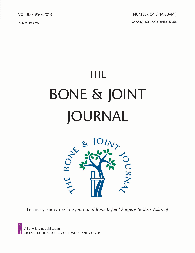
ARTHROPLASTY
Navigated 'femur-first' vs conventional MIS THA for impingement-free range of motion
This report has been verified
by one or more authors of the
original publication.
Bone Joint J. 2015 Jul;97-B(7):890-8
135 patients scheduled for minimally invasive total hip arthroplasty (THA) were randomized to either a navigated 'femur first' technique or conventional technique. The purpose of this study was to evaluate and compare the proportion of patients displaying CT-based range of motion necessary for activities of daily life (ADL) without prosthetic-bone or prosthetic-prosthetic impingement. Clinical outcome scores and clinical range of motion were also evaluated over one-year follow-up. The results demonstrated a higher proportion of patients in the 'femur first' group with impingement free flexion exceeding 110 degrees, but no significant differences in any other motion (extension, internal rotation, etc.). Clinical outcome scores and clinical ROM were similar between groups at one year postoperatively.
Unlock the full ACE Report
You have access to {0} free articles per month.Click below to unlock and view this {1}
Unlock NowCritical appraisals of the latest, high-impact randomized controlled trials and systematic reviews in orthopaedics
Access to OrthoEvidence podcast content, including collaborations with the Journal of Bone and Joint Surgery, interviews with internationally recognized surgeons, and roundtable discussions on orthopaedic news and topics
Subscription to The Pulse, a twice-weekly evidence-based newsletter designed to help you make better clinical decisions
Exclusive access to original content articles, including in-house systematic reviews, and articles on health research methods and hot orthopaedic topics
Or upgrade today and gain access to all OrthoEvidence content for just $1.99 per week.
Already have an account? Log in


Subscribe to "The Pulse"
Evidence-Based Orthopaedics direct to your inbox.
{0} of {1} free articles
Become an OrthoEvidence Premium Member. Expand your perspective with high-quality evidence.
Upgrade Now













































































